In the mid 1990s, a huge part of the world wide web was a wild, colorful place full of personal creativity. One of the most famous platforms during this period of time was a freehoster called "GeoCities", they hosted around 38 million websites for their users. It was a place where everyone could build their own website for free and share it on the public internet. But what happened to GeoCities?

GeoCities was first launched in 1994 and quickly became a popular website builder. It let people create their own website, with no need of coding experience. It made website creation easier for non-technical users, but it did not completely eliminate the need for coding. GeoCities provided templates and basic tools, so users were able to create a webpage without starting from scratch. However, to customize your site beyond the basics, they had to learn a bit of HTML and CSS. For example, adding images / GIFs and changing text colors usually required some manual coding. Many users who started on GeoCities learned these skills step-by-step. It became a kind of crash course in web development, a great starting point for beginners to try out coding.
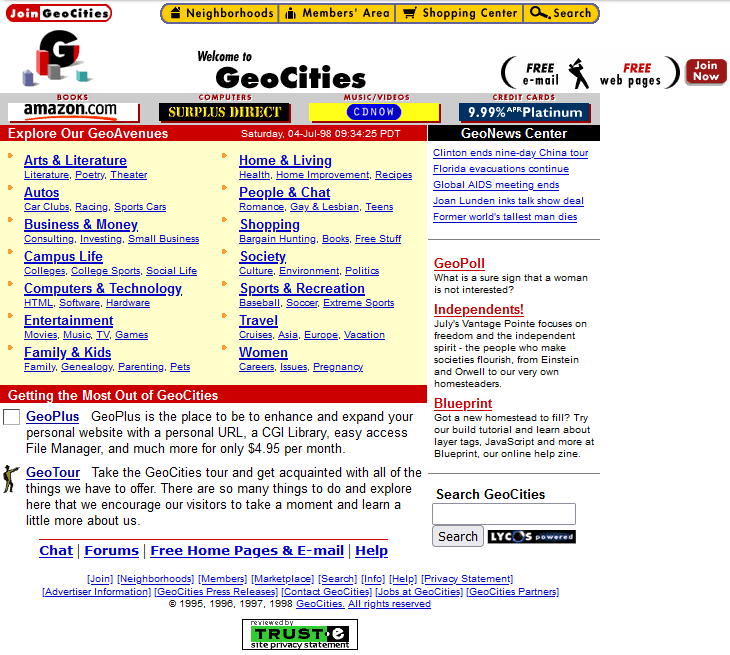
GeoCities Website, 1998.
They offered 15 MiB of disk space for the website, a web builder, an HTML editor and a file manager for organizing and uploading the sites. Users could also upload their sites via FTP. From 1997, the users had to accept advertising windows.
During June 1998, the company wanted to increase brand awareness, so they introduced a watermark on user websites. The watermark was a transparent floating GIF that used JavaScript to stay displayed on the bottom right corner of the browser screen.
Users could pick "neighborhoods" based on their interests, like "Hollywood" for movies or "SiliconValley" for tech and content related to computers. View a list of all neighborhoods and suburbs of GeoCities.

The pages were very unique: Bright backgrounds, blinking text, flashy GIFs. It may look messy and unprofessional from today‘s perspective, but it was common at the time. People shared their hobbies, thoughts, and even family photos. GeoCities was all about self-expression. At the bottom of this site you can find pictures of some typical GeoCities websites.
In 1999, Yahoo! bought GeoCities for $3.57 billion. After that, things started to go downhill. By 2009, they decided to shut it down. Many users lost their websites forever. But some smart people saved the content and created torrents with the archived data, so the sites of GeoCities would not disappear completely. You can still find the GeoCities archive torrent today if you are curious to see what the internet looked like back then or wish to help archiving and sharing it.
GeoCities has been partially archived by the Internet Archive. A short time later, ReoCities was founded: A project with the goal of keeping the GeoCities websites as close to the original as possible. Other projects with the same goal are Geocities.ws and OoCities.com. In 2014, net artists Olia Lialina and Dragan Espenschied founded the Geocities Research Institute and were able to archive a terabyte of GeoCities homepages in order to document the beginnings of the Internet in the 1990s and use them for research. With One Terabyte of Kilobyte Age, they run a Tumblr blog, which automatically posts several screenshots of old Geocities pages online every day.
On 26th October 2009, GeoCities was taken offline, except for the japanese branch, which stayed online until 31st March 2019. After GeoCities, the internet changed: It became more and more corporate. Platforms like Facebook, Instagram, and Twitter became the norm. These platforms made it easier to share things, but they also took away creativity. Instead of building your own website, people now post in the same boring format as everyone else.
Here are some typical websites from that time:
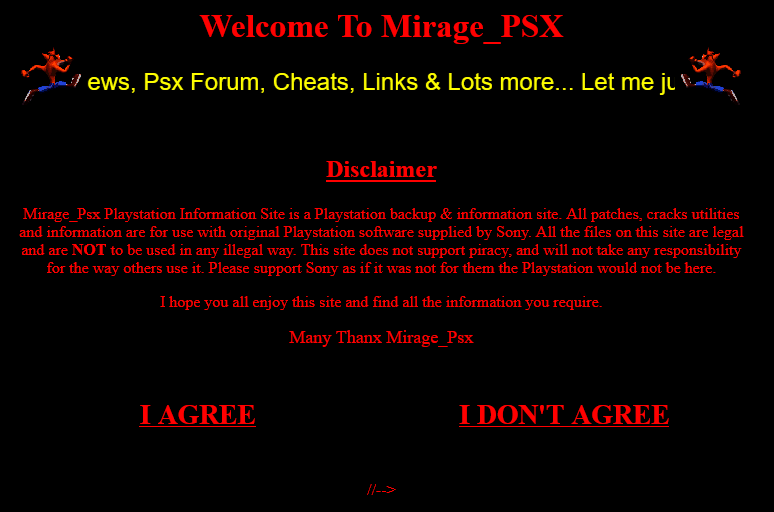
Mirage_PSX

Brian and Dan's Page of Cheat Codes
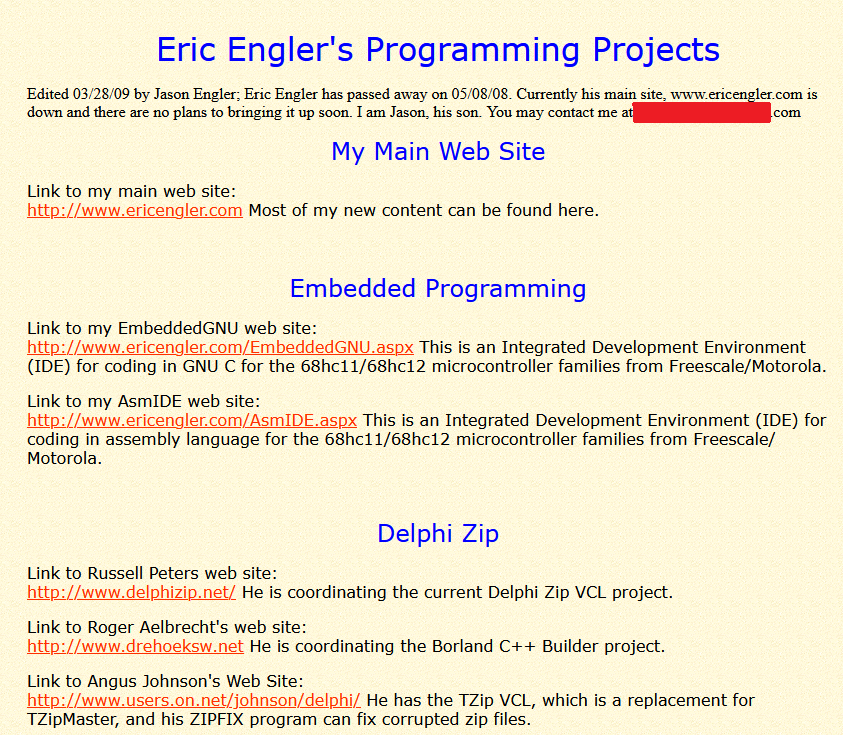
Eric Engler's Programming Projects
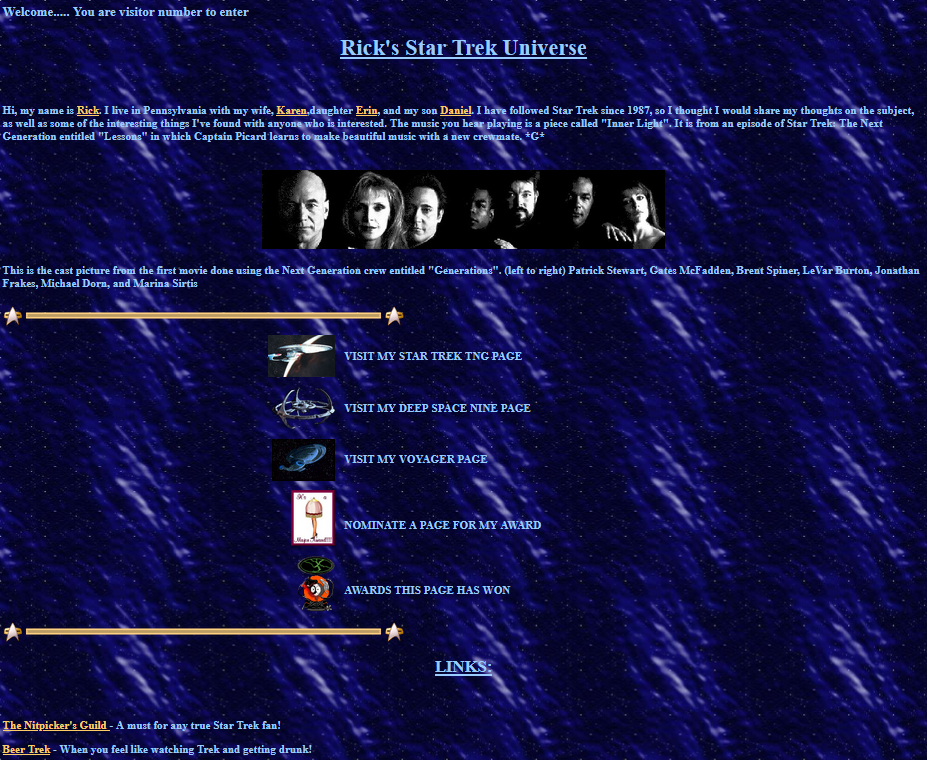
Rick's Start Trek Universe
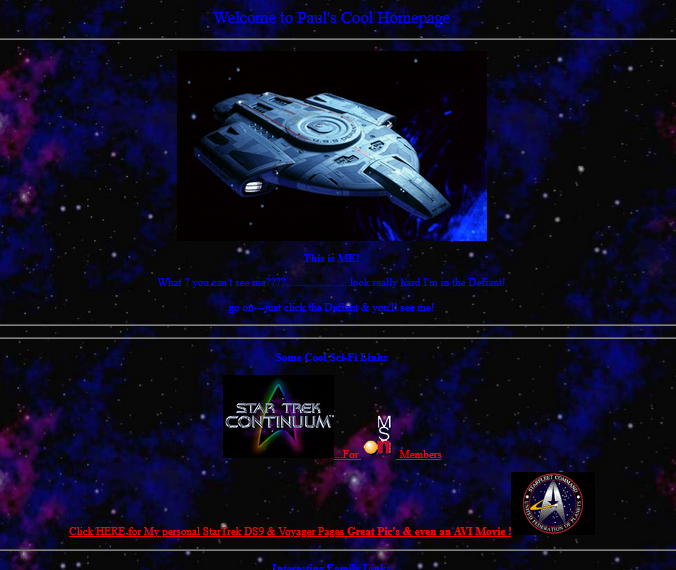
Paul's Cool Homepage
